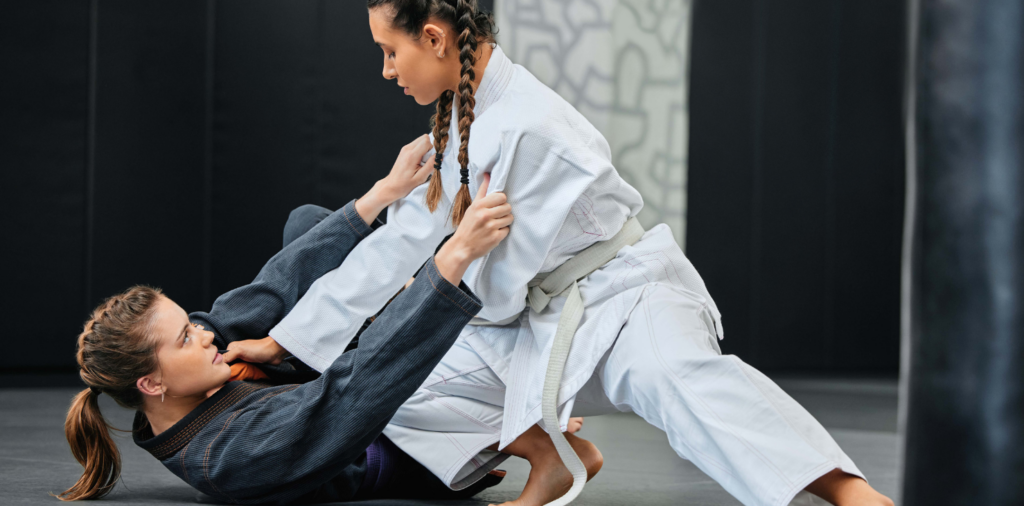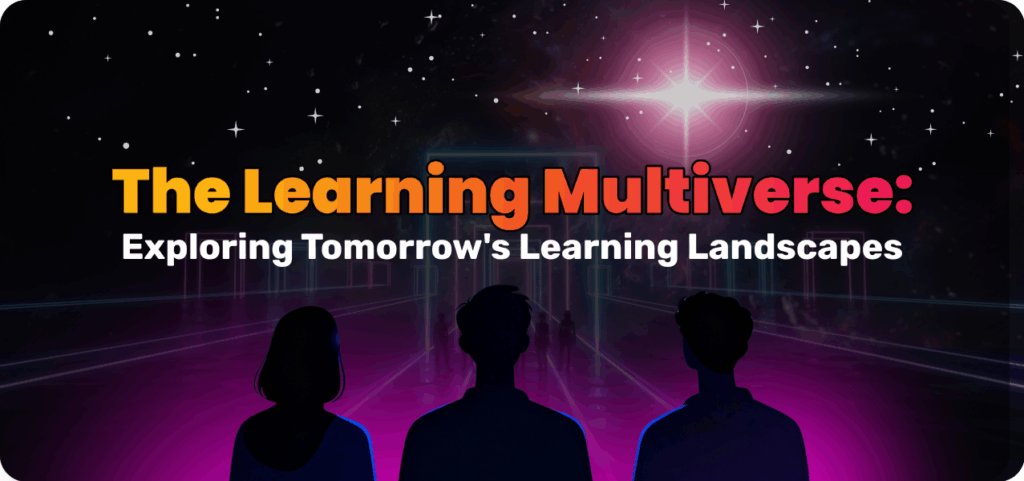What Jiu Jitsu Teaches Us About Neuroplasticity, Trauma and Safe Spaces

A widely popular martial art, studies have shown jiu jitsu to be remarkably successful at encouraging neuroplasticity, enhancing learning through the mind-body connection and cultivating safe spaces. How can L&D professionals utilize lessons from jiu jitsu to create more dynamic and supportive learning environments?
I love jiu jitsu. Even though I’m pretty bad at it right now (in my first few months, I have been humbled by many a ten-year-old), I keep going back because I learn something new every time I’m on the mat. In the times where I have managed to outsmart a higher belt with a new technique, I’m met with good-natured laughter and congratulations, reinforcing the supportive environment that keeps me coming back.
This experience made me realize the unique potential jiu jitsu holds for the world of Learning & Development (L&D). Based on research published in Jamie Marovich’s book, “Transforming Trauma with Jiu Jitsu,” this martial art has been shown to support trauma recovery, encourage neuroplasticity and strengthen the mind-body connection. By creating safety and security both physically and mentally, jiu jitsu offers valuable lessons for L&D professionals aiming to foster dynamic and supportive learning environments.
Let’s explore how principles from jiu jitsu can transform L&D practices to create more effective, supportive and dynamic learning spaces.
How does trauma research connect to Learning & Development?
While L&D practitioners don’t typically work with complex PTSD, they often help people step out of their comfort zones and foster a growth mindset. People with a fixed mindset believe their abilities are static, whereas those with a growth mindset believe they can improve over time. Research shows that people with a fixed mindset have less activity in the brain’s learning center, the prefrontal cortex—similar to brains impacted by trauma.
Trauma affects the brain’s learning center because we learn through experience. After a traumatic event, the brain perceives similar situations as threats, even if they’re not. Similarly, learning can be stressful for those with a fixed mindset, as past failures may have been frightening, dangerous or otherwise intolerable. These experiences rewire the brain, reinforcing limiting beliefs about growth down to the neurological level.
Fortunately, the brain’s neuroplasticity allows for a growth mindset to be developed through positive learning experiences. While we shouldn’t equate PTSD with “little t” traumas, trauma research helps L&D professionals understand why some people have fixed mindsets and provides tools to encourage a growth mindset.
Body-focused therapies, like jiu jitsu, can play a key role in healing because trauma impacts the body at a cellular level. By exploring sports like jiu jitsu through a trauma-informed lens, L&D professionals can leverage the mind-body connection to enhance learning experiences.
How Jiu Jitsu Creates Better Learning Environments:
Physical Exercise Increases Neuroplasticity
I hate to give the gym bros a win, but it’s true: exercise makes you feel better. Moving your body stimulates the release of endorphins, a neurotransmitter that naturally makes you happier.
The long-term effects of exercise are even more fruitful. Exercise promotes neurogenesis—the process by which new neurons are developed in the brain. This is great for encouraging neuroplasticity, forging new connections in the brain and training a growth mindset.
Supporting the Physical Aspects of Safe Spaces
Safety is more than mental—it’s physical. Jiu jitsu teaches you how to feel safe in your own body through a deeper understanding of your physical strengths and limitations. Rather than using strength and force to overpower someone, you learn to make the most of your body weight and size, tactically leveraging your opponent’s strengths against them. The control you gain by being in touch with your body creates a sense of safety and confidence that extends beyond the mat.
Physical safety fosters trust and restores focus on learning. L&D professionals can create physical safety by giving participants autonomy and control. Risk management and communicating safety protocols can instill trust and increase engagement. Going deeper, L&D professionals might also consider the accessibility of the space, going as far as introducing accommodations like lighting changes, room temperature and sending powerpoint slides in advance. Introducing tactile elements into your training programs, like group movement activities or collaborating via post-it notes, can also stimulate the mind-body connection, giving participants more control over the physical space.
Jiu Jitsu’s Culture Creates Psychological Safety
As a woman in martial arts, it can be a little awkward and isolating to enter a highly physical, usually male-dominated space for the first time. However, the instructors took extra measures from the start to ensure that I felt safe and welcome. Wrestling is very physical, but any time an instructor demonstrated a move, they always asked permission and checked in with everyone to make sure we were okay with what they were demonstrating.
Additionally, there’s a culture of communicating boundaries and asking about intensity level, which promotes psychological safety while protecting people from injuries. You’re also taught how to “tap out” when you are feeling too much pressure or discomfort. Most importantly, there’s no shame in failure, and ego goes out the window. You learn at your own pace, being pushed to grow without exceeding any of your hard limits.
Sometimes the culture around boundaries is that they aren’t as fun, but I think the amount of structure, discipline and respect you bring to a space is equal to the amount of fun everyone gets to have together. After all, any game worth playing has rules. In the learning environment, can you instill rules, boundaries and check-ins early in the learning process to ensure everyone is able to have fun and feel safe? How can you encourage a culture of communication so that any fears or discomfort are addressed early on?
Practicing Mindfulness Under Pressure
There are plenty of ways for you to gain the upper hand in jiu jitsu; one way is to control your opponent’s breath. If you put your weight on someone’s chest and make breathing more challenging, usually the person starts to panic. On the flip side, when you’re the person who’s not able to breathe… you need to learn how not to panic.
This wasn’t a lesson I was expecting to learn, but it turned out to be extremely useful in all areas of my life. While I was really scared and upset the first couple of times I experienced my breath being cut off, I was able to tap out and then take a moment to gather myself. My instructor talked me through it, validating how scary that experience is. She helped me to realize that, despite the discomfort I felt, I was safe. I could always tap out if the feeling was too intense, and with more experience, I learned strategies that helped me to regain control. Now, if I’m ever in a bad position where I can’t breathe, I can regain control by staying calm and engaging tactically with the problem.
That mindfulness—learning not to panic under pressure—can be a huge lesson in a variety of learning environments. Not only are you learning to come down from that fight-or-flight mindset, you’re also learning resilience when you’re in high pressure situations. Anxiety and stress take you into overdrive, where you imagine the worst scenarios and lose sync with the moment.
As an L&D professional, validating the fear and discomfort learners might have is an extremely helpful way to introduce calm and help them re-engage. Tools that promote mindfulness, such as deep breathing, body scanning and reflective journaling, can also bring people back to the present moment. While controlling every aspect of life is impossible, you can manage the outcome of difficult moments and the meaning you ascribe to that experience.
Conclusion:
Learning can be intimidating, as it often involves venturing into the unknown. Jiu jitsu builds confidence by showing that you can maintain control and find peace, even when faced with uncertainty. Known as the “Gentle Art,” jiu jitsu retrains the mind to embrace growth by cultivating mindfulness and security in challenging situations. Additionally, the endorphins released through physical activity promote neuroplasticity, fostering new and deeper neural connections.
In the L&D space, understanding the neurobiological aspects of learning is invaluable. Recognizing how trauma can impact or hinder the learning process, and knowing how to overcome these barriers, allows us to create truly supportive and dynamic learning environments. By integrating lessons from jiu jitsu, L&D professionals can build community-driven spaces that prioritize safety, encourage growth, and unlock the full potential of every learner— building truly safe spaces for everyone.
Author
Subscribe to get Access to Exclusive Content





